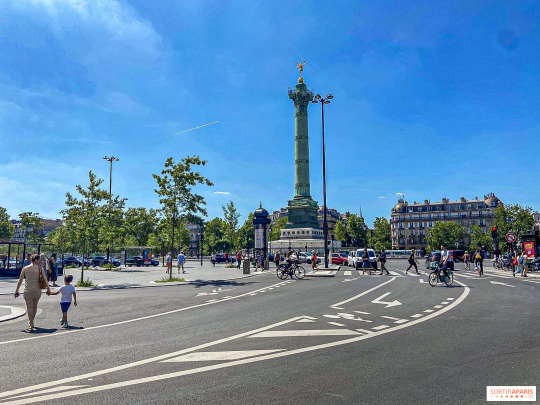Photo


I had heard about ‘The Pantheon’, but did not know it was modeled after the one in Rome! The only difference between the one in Rome and France is the dome attached at the top. The pillars are definitely Roman inspired and the Pantheon is in the midst of many buildings and homes today. The architectural style is neoclassical and gothic, and is actually a church in replacement of another church! I love gothic style buildings, and I feel like it fits the image of a church dedicated to the important figures who were buried here. Even the architect who built it, Jacques-Germain Soufflot, unfortunately passed away before completing it, but was buried there as well! King Louis XV had initially planned to build the Pantheon in glory of St-Genèvieve, who prayed and saved many in France with worship. The name ‘Pantheon’ translates to “every God”. The front of the Pantheon reads, “AUX GRANDS HOMMES LA PATRIE RECONNAISSANTE”, which translates from French to English: “To great men, to grateful homeland”. The Pantheon honored those who fought and changed French history in the course of the war. This did not necessarily mean only the soldiers who fought, but writers, artists, and influential people, who had significant roles in the revolution as well. In case it is hard to obtain all of this information of the Pantheon, take a look inside to see the wonderful art painted on the walls, and the architectural styles inside and outside of the Pantheon. The art depictions in the Pantheon were dedicated to the inspiration herself, St-Genèvieve, and significant moments in the French Revolution. The sculptures have incredible details to them and I forgot where I was at the moment from the awe-inspiring mosaics. The Pantheon is beautiful, but I wonder what Soufflot would have done if he were alive to finish it?
0 notes
Photo

Woke up this morning and decided to walk down the street and sightsee on my own. The column in the picture above reminded me of the Washington monument here in Washington, D.C. While on my walk, I overheard other tourists talking about it and mentioned the name, ‘la Colonne de Juillet’ (The July Column), which had a golden angel at the top of it. The golden angel, ‘le Génie de la Liberté’ (Spirit of Freedom) while holding a torch, was a symbolic reminder for the freedom of civilization. The Bastille is a square in Paris and is a historic area signifying various revolutions that took place there. Demonstrations and celebrations are still being held there, and was originally built to be a medieval fortress. The Bastille was overtaken, demolished, and turned into a prison under the reign of Charles V, which ignited the French Revolution. Unfortunately, the prisons were poorly sanitized and caused an illness to spread to inmates, and on a rare occasion lawyers and judges. The prison system in the sixteenth century had a thoughtful premise, but did not have the best execution at the time. I heard Voltaire and a few other important people in politics were entrapped in that prison. The fall of the Bastille was on July 14th, 1789 in Paris and was made as a holiday in France. This major holiday reminds me of our Independence Day on the fourth of July, where the American flag is our symbol of freedom. I can imagine families visiting this square, who had their ancestors battle during the revolution, dance and march around the Bastille, and see everything unfold until they were free. Since this is a popular area, I am sure there are others who like to protest any wrongdoings in the country. The square epitomizes freedom and justice and all who believe in those principles would want to come visit.
0 notes
Photo


Today I went to visit The Palace of Versailles. Amazing architecture and a wonderful experience to tour, what was once the beautiful home of King Louis XIV and alike. This particular room happens to be my favorite, “The Hall of Mirrors”. In person, this room was as big as a ballroom (73m) and led to the gardens. The entire room is surrounded by luxury and exudes wealth. The hall of mirrors is not just for meetings, and on rare occasions weddings, but it was a room full of history and successes during King Louis XIV’s reign. The ceiling inside this hall was painted by Le Brun, with over 30 paintings that spread across the room. In the middle painting with the two red flags, it was to signify an alliance between Germany and Spain with Holland. In one of two victories, King Louis XIV won in 1672. I had to stop and stare at everything, even though it was hard to see every detail. While on my tour of the chateau, I learned King Louis XIV had loyal monarchs and servants living in the various different apartments inside as well. King Louis XIV’s apartment was in the center of the palace, signifying absolutism and him being a person of higher power. The apartment was an invitation only from the king, and only people of power may enter. The palace had a hierarchical system, and the king had his subjects learn etiquette and care for his home. The Palace of Versailles was gradually but continuously expanding, while the reign of the king lasted for many years. The gardens stretch across the front of the chateau, as well as the large fountain placed in the center. A home to many in the past and now an architectural masterpiece for the public, surely I will visit the palace again soon!
1 note
·
View note